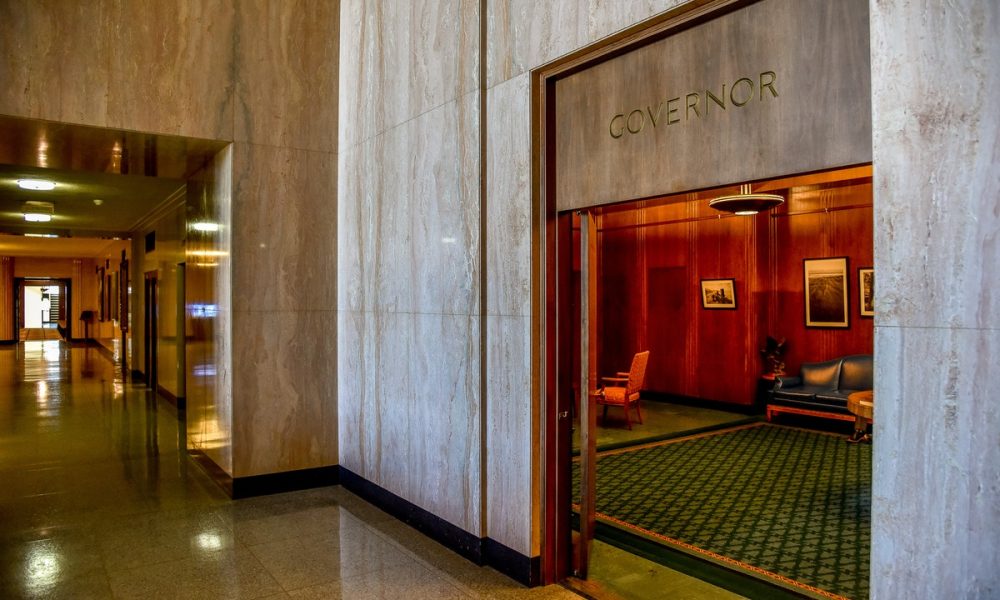
Oregon’s close gubernatorial race between Democratic Gov. Kate Brown and GOP candidate Oregon Rep. Knute Buehler has captured the attention of national political pundits.
On Tuesday, the race made the front page of the Cook Political Report’s website, with analyst Jennifer E. Duffy upgraded the race to a “tossup” – rare territory for an Oregon Democrat holding a governor’s seat in the 2018 mid-terms.
Duffy’s analysis appears to be based on polling showing Brown with a 4- to 5-point lead over Buehler.
Jim Moore, a political scientist and director of the Tom McCall Center for Policy Innovation at Pacific University, said Duffy’s report amounts to an outsider looking at polls without local context.
“I look at the same polls they do,” Moore said. “Most of the national polls looking at Oregon are awful. They overestimate unaffiliated voters.”
Moore has studied every governor’s race in the state’s history. Usually when Republicans win, they win big. Democrats win more often, but with tighter margins, he said. This race, he said, fits right in with the historical narrative.
But Duffy didn’t just cite polls. She also looked at the candidates’ histories, but spent more time digging into why Brown isn’t connecting with voters than why Buehler is.
“Brown can and has been attacked on a host of issues from signing $13 billion in new taxes to ignoring the state’s troubled foster care system even after a report found that the system is in crisis,” Duffy wrote. “She hasn’t addressed more pervasive issues like the state’s failing schools or the pension crisis, and she has broken her promise to make government more transparent.”
Buehler’s campaign indicated that the analysis validated his work on the campaign trail and his claim that statewide, voters have an appetite for change.
“After roughly a year of campaigning and listening to voters, Knute has found that Oregonians are hungry for change – someone who will take on the failing status quo and rescue our schools, homeless and foster children,” spokeswoman Monica Wroblewski said.
Christian Gaston, spokesman for Brown’s campaign, was flabbergasted.
“It’s just like bizarro world,” Gaston said.
He said the $13 billion figure is a false Republican talking point, which includes the failed corporate tax Measure 97 in 2016 and other revenue proposals that were defeated.
On foster care, Brown has increased funding by 19 percent, Gaston countered, and replaced agency leadership. She pushed a 22-percent increase in education funding and saw a historical increase in graduation rates.
Gaston disagreed with Duffy’s characterization of the public pension system, saying it’s 81 percent funded, which is greater than the national average. On transparency, Gaston pointed to Brown’s overhaul of the state’s public records law.
“If you’re not looking at the polls and you’re just watching Knute Buehler’s ads, maybe you could come to that conclusion,” Gaston said. “But that doesn’t comport with reality.”
He said he doubts that the Cook Political Report will swing the election and claimed that Buehler “duped the Political Report” with misleading campaign messaging.
Wroblewski said the report is a sign of Buehler’s increasing momentum in the race.
“Knute will do this,” she said. “He will lead where Kate Brown has failed.”
Duffy’s article comes on the heels of the Oregonian and Portland Tribune endorsing Buehler.
The impact of those editorials is yet to be seen, Moore said.
“Newspaper endorsements are important if Buehler does something with them and they catch on with people,” he said, adding that over the past 30 years, there has been a continual decline in the influence of newspaper endorsements.
Moore said he expects Buehler to use the endorsements as fodder in a campaign ad, but it’s unclear how many undecided voters there are to sway, or how many decided voters are open to changing their mind this late in the game.
John Horvick, political director of DHM Research, said his recent poll found 17 percent of likely voters statewide were undecided. In rural Oregon – places outside of the Portland metro area and Willamette Valley counties – a greater percentage – 21 percent – remained undecided. Those areas are where Buehler could make up ground, as many voters are just starting to tune into the race, Horvick said.
Horvick concluded that Duffy’s analysis is a “fair assessment.”
“Given that spread, a ‘Tossup’ or ‘Lead D’ seems fair,” he said. “There are a lot of structural advantages in Oregon for Democrats, so I tend to think a tie will favor Democrats. But ultimately, voters will decide.”
Aubrey Wieber: [email protected] or 503-575-1251. He is a reporter for Salem Reporter working with the Oregon Capital Bureau, a collaboration of the Pamplin Media Group, EO Media Group, and Salem Reporter.
Paris Achen: [email protected] or 503-363-0888. Achen is a reporter for the Portland Tribune working for the Oregon Capital Bureau, a collaboration of EO Media Group, Pamplin Media Group and Salem Reporter.









